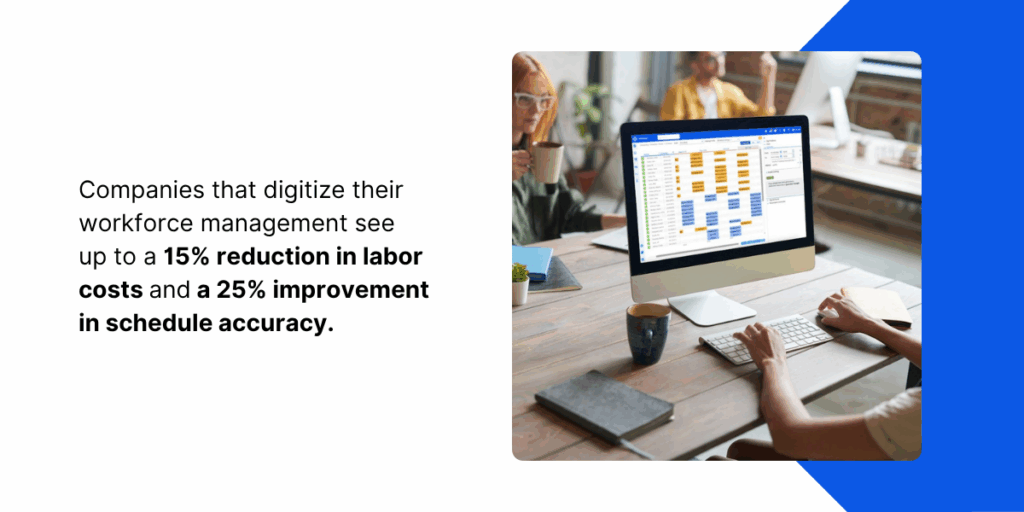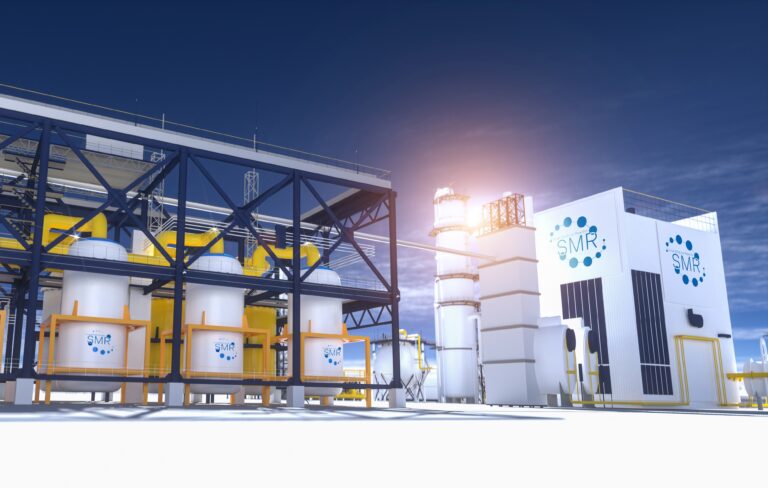Factory automation has revolutionized the manufacturing landscape. With smart machines, industrial robotics, and IIoT (Industrial Internet of Things) platforms working around the clock, manufacturers are achieving levels of precision, speed, and consistency that once seemed impossible.
According to McKinsey & Company, automating manual and repetitive tasks, successful operations centers are reducing costs by 30-60% while increasing delivery quality. Yet even the most sophisticated machines need human oversight.
Automation may streamline production processes, but without aligned labor, trained, available, and deployed at the right time, those gains can stall. Factory automation is only half the equation. Labor alignment is the other half that manufacturers must get right to drive sustainable performance.
The Realities of Factory Automation
An automated factory uses control systems, like computers, programmable logic controllers (PLCs), and robots, to handle manufacturing tasks with minimal human intervention. Companies invest in factory automation to reduce costs, eliminate repetitive labor, and improve consistency.
Yet full autonomy remains more vision than reality. Currently, only about 5% of manufacturing tasks can be fully automated with current technologies. Most factory environments still require humans to monitor machines, troubleshoot issues, interpret production data, and oversee compliance.
That’s where the disconnect begins. As organizations upgrade their factory automation systems, they often overlook the workforce implications: new skills, new roles, and more complex scheduling demands.

Labor Gaps Disrupt Operational Success
Many manufacturers assume that investing in automation automatically reduces their labor burden. But automation doesn’t eliminate labor, it changes it.
Instead of repetitive tasks, workers are now responsible for managing highly technical operations. This shift requires new competencies in programming, data analysis, and digital oversight. The labor pool must evolve, but that takes time and strategy.
Without proper labor alignment, manufacturers face avoidable challenges:
- Idle equipment: If the right person isn’t available to initiate or monitor a machine, production halts.
- Quality issues: Errors occur when underqualified or misassigned workers are placed on automated lines.
- Regulatory risk: Without compliance-based scheduling, businesses can run afoul of labor laws or safety standards.
In fact, many manufacturing leaders cite “unavailable skilled labor” as the top reason for missed production goals. This gap not only impacts productivity but also increases operational costs and delays product delivery. Addressing labor alignment proactively is essential to fully leverage factory automation investments and maintain a competitive advantage.
Aligning Labor with Automation
So what does strategic labor alignment look like in the era of factory automation and process automation? It’s more than just filling shifts—it’s about real-time precision.
- Demand-Based Scheduling: With automation accelerating production, labor planning must become equally dynamic. Demand-based scheduling aligns human resources with production targets, ensuring that labor supply scales up or down in lockstep with machine activity.
- Competency Management: Skilled workers must be matched to the right roles based on certifications, training, and regulatory requirements. Competency management systems allow manufacturers to build labor schedules that meet both safety and operational standards.
- Compliance-Driven Staffing: Union rules, fatigue policies, and safety regulations are non-negotiable. Digitized workforce platforms help automate these rules, reducing risk and ensuring fairness in scheduling.
- Contingency Readiness: When automation fails or demand spikes unexpectedly, response time matters. Workforce management systems like Indeavor’s enable agile rescheduling, call-in coverage, and overtime tracking—without manual spreadsheets.
As automation reduces human error in production, similar precision should be expected from labor management systems. Indeavor helps manufacturers bridge this gap, supporting the integration of workforce data with factory automation products for complete operational visibility.
Human and Machine Synergy Is the Future
The ultimate vision of a smart factory isn’t about replacing humans. It’s about amplifying them. When workers are empowered by automation, productivity increases. When automation is supported by intelligent labor deployment, efficiency compounds. Organizations that recognize this synergy will outperform those that focus solely on machines.
Companies that digitize their workforce management see up to a 15% reduction in labor costs and a 25% improvement in schedule accuracy. These outcomes aren’t just financial; they improve morale, retention, and safety.
To fully capitalize on factory automation, manufacturers must recognize labor as a strategic asset. Human input is still required to:
- Interpret and act on sensor data
- Respond to equipment anomalies
- Perform quality assurance and regulatory audits
- Manage and supervise multi-site automation networks
Smart factories need smart workforce systems. At Indeavor, we understand that automation alone can’t drive peak performance; it needs a workforce aligned to support it. That’s why our workforce management software is designed to integrate seamlessly with your factory automation solutions, giving you real-time visibility into labor availability, skills, and compliance alongside machine operations.

Unlocking Full Value from Automation
Factory automation has reshaped how work is done, but not who needs to do it. By pairing advanced automation with agile, transparent labor alignment, organizations can realize the true promise of Industry 4.0.
Indeavor’s system automates complex employee scheduling, ensures the right people with the right competencies are always on the line, and adapts quickly to changes in production demand or unexpected absences. By digitizing labor alignment, Indeavor helps manufacturers reduce downtime, optimize labor costs, and enhance operational agility.
It’s time to move beyond machine-led strategies. Labor matters. And with the right workforce solution, manufacturers can finally achieve the operational harmony that automation was designed to unlock.
Ready to see how Indeavor can help you unlock the full potential of your factory floor automation investments? Book a demo today to discover workforce management built for the modern smart factory.
About the Author
Claire Pieper is the Digital Marketing Specialist for Indeavor. In her role, she specializes in crafting strategic and engaging content, ensuring that customers are well-informed. Claire is dedicated to enhancing the customer experience and optimizing the user journey through Indeavor’s solutions. To learn more or get in touch, connect with Claire on LinkedIn.



